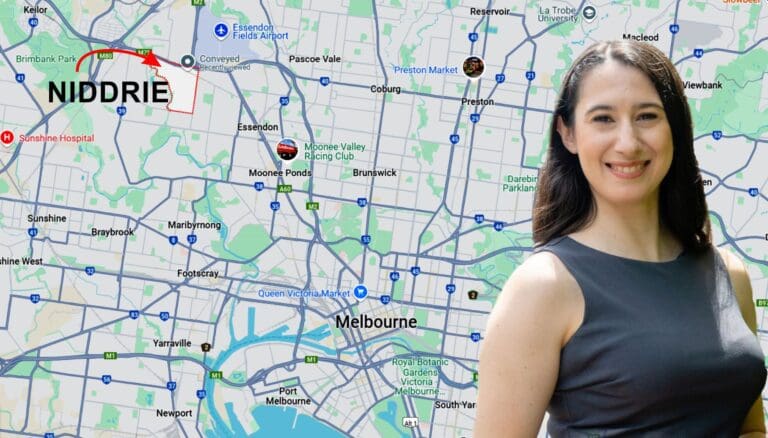When you buy or sell property in the Melbourne property market, you’ll need conveyancing.
What is conveyancing in Melbourne?
Conveyancing is the process of transferring a property from one person to another. At the time of transfer, a buyer will pay money to the seller for the property.
A conveyancer represents you when you buy or sell a property. They perform the work necessary to transfer the property from seller to buyer.
What is the settlement of a property?
‘Settlement’ is the time at which the seller transfers the property to the buyer in exchange for payment, usually in the form of a market price under a sale contract.
Why is settlement important?
Settlement of a property must take place to become the owner of the property.
The contract used to buy or sell a property will contain an agreed settlement date. This is the most important date under the contract.
If a party does not settle the property on time, the contract requires that party to pay delay costs to the other. This includes legal costs, interest accruing on home loans, alternative accommodation etc.
To avoid delay costs, make sure you and your lender are ready to settle on time.
How to prepare for settlement
If you are buying property in Victoria, here is what you need to do to prepare for settlement:
Speak to your mortgage broker
If you are borrowing funds to purchase a property, get your finance pre-approved through a mortgage broker to know how much and where you can afford to buy property in and around Melbourne.
Don’t fall into the trap of buying a property you can’t afford because you did not enquire into your borrowing capacity through a mortgage broker.
A mortgage broker represents you and acts in your best interest to secure you a loan that suits your needs and budget. A banker acts for the lender that employs them and not in your best interests
Find your dream home
Find a property based on your budget and the amount of finance you have been pre-approved to borrow. If you know your borrowing capacity and the costs you need to budget for through your mortgage broker, you know what you can afford to buy and where to look for your dream home.
Lawyer up
Engage a conveyancing lawyer to review the sale contract and vendor statement and advise you on any risks disclosed in these sale documents. A conveyancing lawyer is trained, qualified and insured to provide legal advice.
Do not use a conveyancer that is not a lawyer to give you legal advice. They are not qualified, trained and insured to give legal advice.
This means if a conveyancer steps outside of their insured scope of work, and gives you negligent advice, causing you loss or damage, you may not be able to recover loss or damage under their professional indemnity insurance policy.
Negotiate terms
If you uncover through the advice of your Melbourne conveyancing lawyer that the property is a risky investment, you can hire your conveyancing lawyer to negotiate changes in the sale contract to remove or alter your risk.
For example, your conveyancing lawyer can negotiate to delete clauses or amend clauses to:
- shift liability to the seller.
- reduce the extent of liability you have for any matters raised under the sale contract.
- give you rights under the contract in response to a risk that materialises.
Get the property
If you’re comfortable to proceed with buying the property after getting legal advice from your Melbourne conveyancing lawyer, you can sign the contract to buy the property.
Do not sign a contract to buy a property before getting legal advice and finalising the terms of the transaction through your conveyancing lawyer.
Lawyer up again
Engage your conveyancing lawyer or a Melbourne conveyancer to act for you on the transaction and begin preparing for settlement.
A conveyancing lawyer is more cost effective in the long run than a conveyancer, as they are qualified and trained to deal with any problems or complexities that arise before, during or after the transaction and will not need to be outsourced by a conveyancer.
Pay a deposit
The sale contract will require you to pay a deposit for the purchase, which is usually 10% of the purchase price, payable in the selling agent’s trust account. If there is no selling agent involved, it is payable into the sellers conveyancer’s trust account.
The sale contract will specify a date by which the deposit must be paid. Ensure the funds are received by the selling agent as cleared funds by the due date, as this will ensure the deposit is paid by the due date.
If you delay paying the deposit, you are in breach of the contract and the seller is entitled to charge delay costs.
Insure the property
Unless the property has owners corporation strata insurance in place to cover the building, take out building insurance from the time you buy the property. This will ensure that:
- The property is covered against an insurable event, such as fire, storm and theft.
- You have met lending requirements if you are financing the purchase through a lender.
Ensure you provide your lender with a ‘certificate of currency’ from the insurer, noting your lender as an interested third party. A certificate of currency is a document which confirms that there is a current insurance policy in place to protect the insurable value of the property.
Get the loan formally approved
After your loan is pre-approved, your lender will conduct a valuation of the property and if they are satisfied with your ability to repay the loan and credit check, they will formally approve your loan.
Sign loan documents
After your loan is formally approved, your lender will prepare and issue you a loan contract and mortgage to sign. Ensure you carefully read and sign these documents as early as possible before settlement to minimise any risk of a delay to settlement.
Sign legal documents
Before of after you receive formal loan approval, your Melbourne conveyancer will send you the necessary legal documents to sign to enable settlement to take place.
Some of the pre-settlement documents are prescribed by government authorities, such as Land Registry, to give your conveyancer the legal right to settle the property electronically on your behalf.
Other pre-settlement documents are prepared by your conveyancer for their own purpose, such as an authority form to sign giving your conveyancer the right to use funds you deposit into their trust account for settlement.
Identity check
Prior to settlement you will need to complete an identity check prescribed by Land Registry to confirm your identity as the buyer of the property for their records. Your conveyancer will provide you with instructions on how to complete the identity check prior to settlement.
Inspect the property
In Victoria, have the option to inspect the property within 7 days before settlement. You will need to arrange an appointment to attend the property through the selling agent.
The inspection is useful to identify if there is any changes to the condition of the property after the property was sold. The standard position in Victoria is the seller needs to deliver the property to you are settlement in the condition it was in on the sale date.
We suggest you bring a registered builder with you to the inspection, as they are trained to identify any damage that may not be obvious to a lay person.
Know what to pay
Closer to settlement your conveyancer will issue you a statement which sets out the costs you need to pay at settlement to become the owner of the property. These costs include, for example, the balance of the purchase price, your contribution to rates and outgoings, conveyancing fees, transfer registration fees and stamp duty.
Provide funds to settle
If the total settlement costs exceed that amount of money available from the loan to complete the settlement, you will need to pay the difference using your own funds.
We suggest you set up through your mortgage broker an account that your lender can draw your funds from for settlement. This is called a ‘shortfall account’.
In the absence of a shortfall account, you will need to transfer your funds into your funds into your conveyancer’s trust account at least a week prior to settlement, so that the funds clear in the trust account in time for settlement.
Your conveyancer will notify you prior to settlement an estimate of how much funds, if any, you need to provide for settlement.
Connect utilities
If you’re planning on moving into the property, you will need to connect in advance all utility services available at the property, such as electricity, gas and telephone, to commence from the settlement date.
Your conveyancer will, after settlement, notify the water, Council, land tax department and owners corporation authorities that you are the incoming owner of the property. The rates and outgoings charged by these authorities run with the land.
Hooray, settled!
Once all parties are ready and able to settle, the settlement will take place electronically on an online platform called Property Exchange Australia. Parties to the settlement include your conveyancer, the seller’s conveyancer, their outgoing mortgagee (if any) and your lender.
Once the property has settled you can grab the keys from the selling agent’s office to move in, crack open the bubbly and enjoy your new home.
We recommend that you move in at least 1 week after settlement, in case of unforeseen delays to settlement. This will minimise the risk of paying further fees to your removalists to reschedule the move.
Need an online conveyancing quote?
We’re conveyancing lawyers that specialise in Melbourne conveyancing and regional Victoria conveyancing.
Get your quick and easy online conveyancing quote by calling our friendly team on (03) 8832 8032 today. Or why not engage us directly through our website in 3 easy steps:
Step 1: Visit www.proptechlegal.com.au and grab a quote
Step 2: Select the service you want to cart
Step 3: Checkout and proceed to payment. Done!
Get your quote today.
Relax knowing our experts are handling your property conveyancing.









